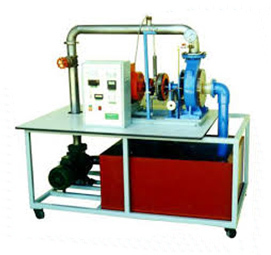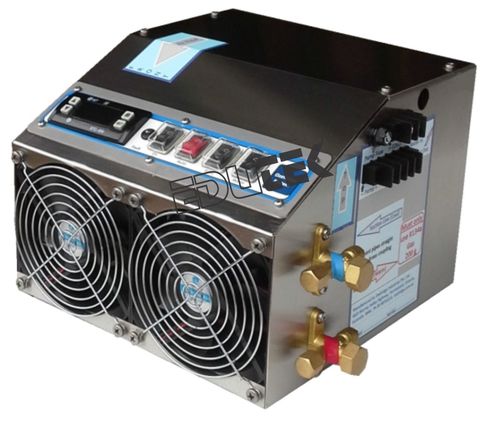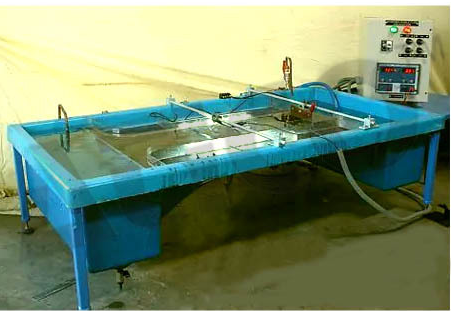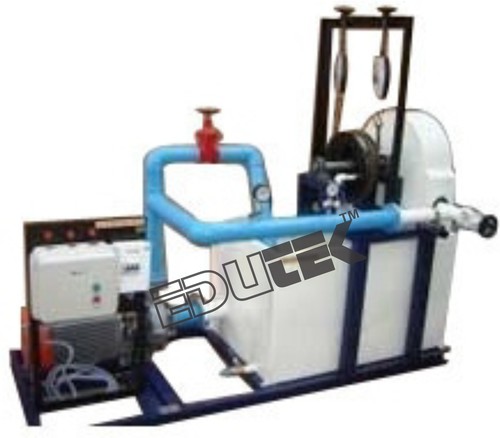
Pump Characteristics For Parallel And Series Configuration
Product Details:
X
Product Description
PUMP CHARACTERISTICS FOR PARALLEL AND SERIES CONFIGURATION
Several pumps are often installed either in parallel or in series configuration for economic reasons. In in parallel configuration the pumps operate in a common pipe. This requires that the pumps used in each case can achieve the same head. Parallel configurations offer the advantage that when demand is low only one pump works and other pumps are switched on as the flow rate increases. In series configuration pumps with equal flow rates are arranged in a row. This arrangement allows the bridging of large heads and is often more cost-effective than the use of a single pump with large head.
The trainer studies the cooperation of two centrifugal pumps and illustrates the differences in parallel and series configuration. The metrology components used are common in industry and therefore closely related to practice.
The trainer has a closed water circuit and is equipped with two identical pumps that are driven by speed-controlled motors. The rotational speed of the motors for the centrifugal pumps can be adjusted via frequency converters. All motors are mounted on swivel bearings so that the drive torque can be measured via a force sensor, allowing the mechanical drive power to be determined. Sensors detect the pressures at inlet and outlet of the pumps. The flow rate is measured by an electromagnetic flow meter. Relevant measured values are read from digital displays and can be transmitted simultaneously via USB directly to a PC where they can be analysed using the software included. The performance data of the pump and losses in the pipe are calculated in the software and shown in the form of characteristics. Characteristic parameters of pumps are determined from the measured values. Furthermore, students are familiarised with the operating behaviour of centrifugal pumps and can practise the correct way to start up and shut down such a pump system. The well-structured instructional material sets out the fundamentals and provides a step-bystep guide through the experiments.
- The unit perform the following experiments and investigations:
- Learning Objectives / Experiments
- Investigate behaviour of centrifugal pumps in operation
- Recording pump characteristics
- Recording system characteristics
- Determining efficiency
- Investigation of series and parallel configuration of pumps
- Starting up and shutting down pump systems
Specification:
- Trainer with 2 centrifugal pumps which are operated in series or parallel configuration
- Closed water circuit
- Drive motors with adjustable speed
- Motor with pendulum bearing, torque measurement via lever arm and force sensor
- Inductive speed sensor on the motor
- Electromagnetic flow meter
- Digital displays for power consumption, torque, speed, pressure and flow rate
- Software for data acquisition via USB under Windows Vista or Windows 7
Technical Data:
- 2 pumps
- Max. flow rate: 21m3/h
- Max. head: 16,9m 2 drive motors
- Power output: 1,1kW
- Speed range: 0...3000min-1
- Supply tank: 96L
Measuring ranges:
- Pressure
- Inlet pump 1: -1...0,6bar
- Outlet pump 1: 0...2,5bar
- Inlet pump 2: -1...3bar
- Outlet pump 2: 0...6bar
- Flow rate: 0...480L/min
- Speed: 2x 0...3000min-1
- Torque: 2x 0...10Nm
- Power: 2x 2,2kW
- Dimensions and Weight
- LxWxH: 2150 x 815 x 1765mm
- Weight: approx. 325kg
Enter Buying Requirement Details
Other Products in 'Fluid Mechanics Lab Equipment' category
"We deal all over World but our main domestic market is South India"
 |
EDUTEK INSTRUMENTATION
All Rights Reserved.(Terms of Use) Developed and Managed by Infocom Network Private Limited. |








